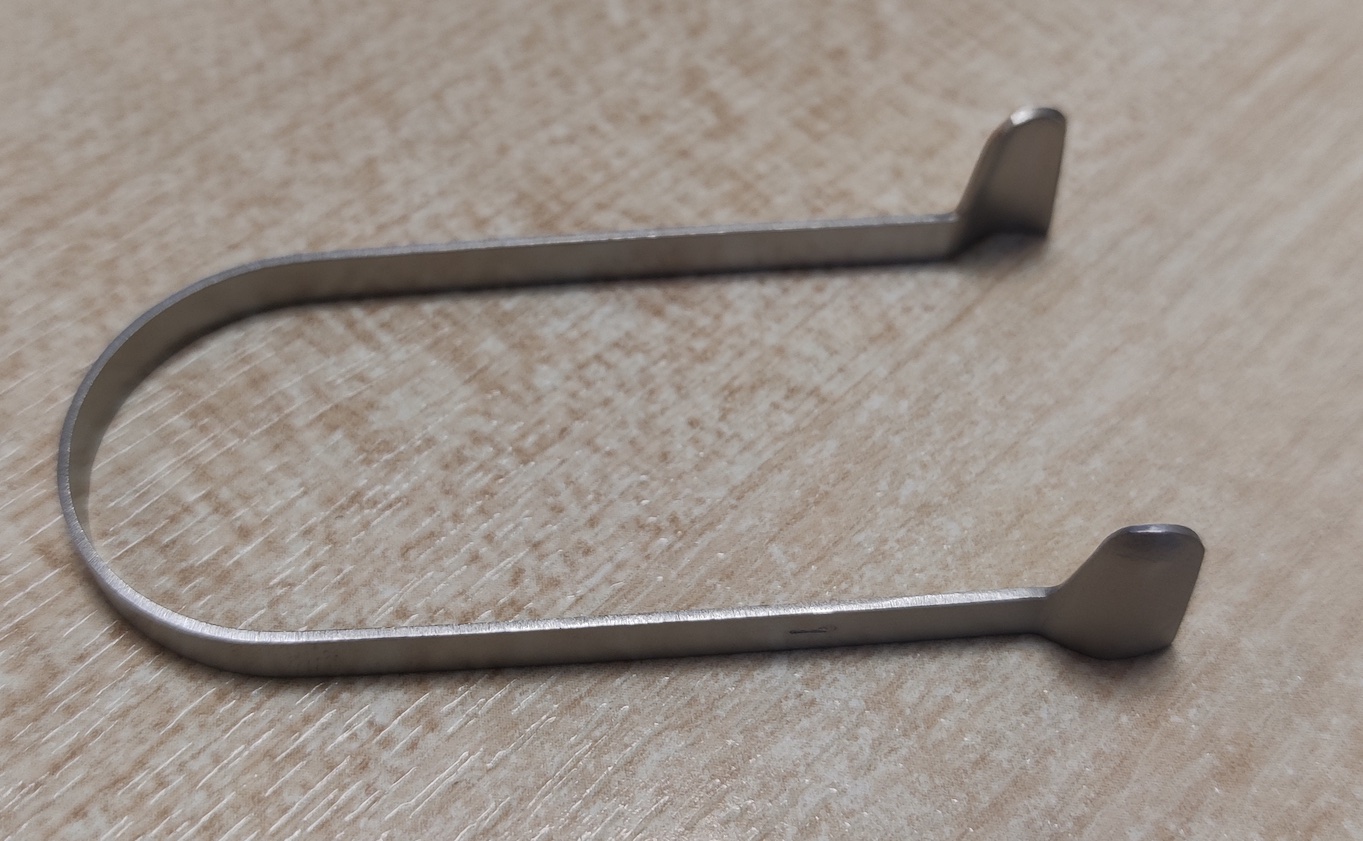- 📖 Geeky Medics OSCE Book
- ⚡ Geeky Medics Bundles
- ✨ 1300+ OSCE Stations
- ✅ OSCE Checklist PDF Booklet
- 🧠 UKMLA AKT Question Bank
- 💊 PSA Question Bank
- 💉 Clinical Skills App
- 🗂️ Flashcard Collections | OSCE, Medicine, Surgery, Anatomy
- 💬 SCA Cases for MRCGP
To be the first to know about our latest videos subscribe to our YouTube channel 🙌
This nasal cautery guide provides a step-by-step approach to performing nasal cautery for epistaxis in an OSCE setting, it is NOT intended to be used to guide patient care.
Indications and risks
Nasal cautery is a procedure performed in cases of anterior epistaxis which do not stop with first aid measures, or for recurrent episodes of epistaxis.
Cautery involves using silver nitrate sticks to cauterise and seal the bleeding point.
The procedure is a quick, simple and effective way to stop a nosebleed. However, there are some risks to be aware of, including:
- Further bleeding
- Septal perforation
- Intranasal adhesions
Gather equipment
Gather the appropriate equipment:
- Non-sterile gloves
- Apron
- Headlight
- Thudicum nasal speculum (Figure 1)
- Topical anaesthetic agent
- Cotton ball
- Nasal forceps
- Silver nitrate cautery sticks (Figure 2)
Introduction
Wash your hands and don PPE if appropriate. A headlight is useful as a light source when performing nasal cautery.
Introduce yourself to the patient including your name and role.
Confirm the patient’s name and date of birth.
Briefly explain what the procedure will involve using patient-friendly language: “Today, I will be performing nasal cautery, which is a procedure that involves sealing the blood vessels on the inside of the nose to stop nose bleeding. There may be some discomfort and bleeding, but it is generally safe and effective.”
Gain consent to proceed with nasal cautery.
Check for any contraindications to performing cautery:
- Inability to see the source of bleeding
- Hypersensitivity or allergy to silver nitrate
Position the patient so that they are sitting comfortably.
Performing nasal cautery
1. Wash your hands and don gloves and an apron (if not already done).
2. Administer topical anaesthesia to the nasal cavity using a cotton ball and forceps or spray. Wait several minutes for the anaesthesia to take effect before proceeding with nasal cautery.
3. Insert the nasal speculum into the affected nostril and expand it to visualise the bleeding point. It can be cauterised if a prominent vessel or bleeding point is identified.
4. Use a rolling motion to apply the silver nitrate stick to the prominent blood vessel and surrounding mucosa in a peripheral to central direction for approximately five seconds.1 This will seal the vessel by delivering free silver ions to bind tissue and produce a grey residue.2
5. Remove the cautery stick and the nasal speculum from the nasal cavity.
Cautions
Important cautions to be aware of when performing nasal cautery include:3
- Limit the contact time between the cautery stick and nasal mucosa – 5-10 seconds is usually sufficient
- Never cauterise both sides of the nasal septum simultaneously, as this can result in a septal perforation
- If bilateral septal cautery is required, the treatments should be separated by 4-6 weeks to allow time for mucosal healing
To complete the procedure…
Explain to the patient that the procedure is now complete.
Thank the patient for their time.
Provide appropriate aftercare advice:4,5
- Prescribe a topical antiseptic cream (e.g. naseptin) to be applied to both nostrils twice a day for two weeks. This will prevent infection and promote healing following cauterisation. Check the patient is not allergic to nuts, as naseptin contains peanut oil.
- Advise the patient to avoid nose blowing, strenuous activity and heavy lifting for at least one week
- Optional: advise patients to apply vaseline to their upper lip to avoid silver staining
- Re-iterate epistaxis first aid advice (see box)
- Safety netting: if there is nosebleeding for >20 minutes despite first aid measures, advise patients to attend the emergency department
Epistaxis first aid advice
Basic first aid advice for epistaxis should include:
- Sit upright and lean the head forward
- Pinch the soft, lower cartilaginous portion of the nose for at least 10-15 minutes
- Apply an icepack to the bridge of the nose or back of the neck to promote vasoconstriction
- Breathe gently through the mouth and avoid swallowing blood
Dispose of PPE appropriately and wash your hands.
Document the details of the procedure, including:
- Safety netting and aftercare advice
- Any immediate post-procedure concerns or complications
Reviewer
Mr Alex North
ENT registrar
References
- M Middleton, P., 2004. Epistaxis. Emergency Medicine, 16(5‐6), pp.428-440.
- Ho, C. and Argáez, C., 2019. Topical silver nitrate for the management of hemostasis: a review of clinical effectiveness, cost-effectiveness, and guidelines.
- Schlosser, R.J., 2009. Epistaxis. New England Journal of Medicine, 360(8), pp.784-789.
- Tunkel, D.E., Anne, S., Payne, S.C., Ishman, S.L., Rosenfeld, R.M., Abramson, P.J., Alikhaani, J.D., Benoit, M.M., Bercovitz, R.S., Brown, M.D. and Chernobilsky, B., 2020. Clinical practice guideline: nosebleed (epistaxis). Otolaryngology–Head and Neck Surgery, 162, pp.S1-S38.
- Lavy, J.A. and Koay, C.B., 1996. First aid treatment of epistaxis–are the patients well informed?. Emergency Medicine Journal, 13(3), pp.193-195.






